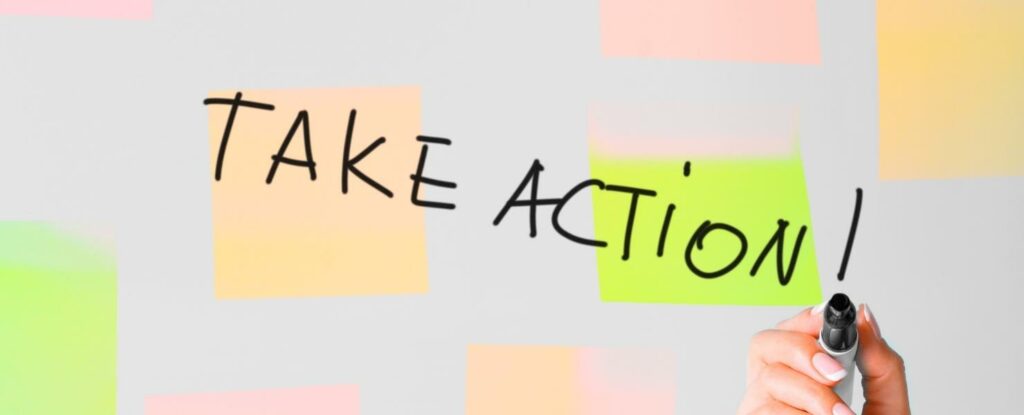“There’s so much to do and not enough time to do it!”
If you find yourself lamenting too much to do and not enough time regularly, then to-do lists may be just what you need to help with your caregiving tasks, not to mention everything else you need to get done.
Even if you already use to-do lists, you may not use them to their maximum potential. After all, it’s easy to ignore lists or include many items that you know you just won’t get done.
Here are some tips to help you improve your list-making skills so you can get more done.
1. Start Small

If you’re new to list-making, the prospect of writing down everything you need to get done can seem too overwhelming. The same may apply if you’re at a particularly stressful point in life where you’re finding it hard to focus. If either of these apply to you, then it’s OK to start small.
Make a list with just a handful of items–even just two or three to-dos–and you can make them easy ones. For example, you can include doing laundry for your senior loved one and cleaning their kitchen. That’s it! When you’re done, you have a sense of accomplishment and get the dopamine hit that comes from crossing those items off the list.
2. Add Verbs

Because to-do lists focus on things you need to get done, a list without verbs doesn’t seem very actionable.
No matter how many items you include on your list, add verbs to them to make sure they are associated with action. For example: Instead of just writing, “Medication,” write, “Organize medication” or whatever verb is appropriate.
3. Include a Deadline
Most people respond well to deadlines. We either work ahead for fear of missing a deadline, or we procrastinate until the last minute but still (usually) manage to meet the deadline. When making a to-do list, include a deadline with your items to ramp up motivation.
4. Find Out Which List Sharing App Work Best for You

There’s no right-or-wrong answer here. Some people still get joy out of keeping lists on paper, while others favor the many list-focused apps out there. If you’re not sure which works best for you, you can experiment. Here are some list-making apps you can check out: Remember the Milk, Reminder, and Workflowy.
If you’re looking for an app that helps you create lists specifically for caregiving, and instantly share those lists or notes with family members who are helping with the process, check out WayWiser as it is built specifically for this purpose. WayWiser connects you with your Trusted Circle of family and friends and allows you to not only share lists and notes, but share calendar events and daily updates about your loved one’s care.
5. Divide Larger Tasks Into Smaller To-Do Items
Some tasks are so big, it’s impossible to get them done in one day so they can be crossed off the list. For tasks like those, you’ll want to divide them into smaller to-do items so you get a sense of accomplishment.
For instance, let’s say you are helping your senior loved one downsize his or her home. On your list, you can divide the home by room. You get a crossed-off item each time you finish organizing/downsizing the kitchen, living room, coat closet, etc.
6. Don’t Ignore Those Arduous But Important Tasks
Most important tasks are ones that may be harder to do and that you’re perhaps not looking forward to, but you’ll feel satisfied when they are done. Add these tasks to your to-do list and aim as often as possible to get them done before you tackle easier tasks. That way, you can get them off your mind.
7. If You Have Trouble Focusing, Here’s Something That May Help

If you find yourself easily distracted (and let’s face it, many of us do nowadays), here’s a to-do list hack. Pick one item that you want or need to get done next. Write that item on a sticky note. Place the sticky note somewhere that you’ll easily see it. If you find yourself getting distracted, the sticky note is right there, ready to remind you what you have to get done. When you get the task done, you can remove that sticky note and replace it with a new one.
8. Work On Your List the Day Before You Have to Get Things Done
You can save time by planning ahead. Taking a couple of minutes at the end of the day to plan for the next day gives you more time to get focused.
9. Acknowledge Your Progress

If you’re new to keeping to-do lists (or you’ve kept these lists in the past but never followed them), it is absolutely OK and even encouraged to acknowledge and celebrate when you get more done. If you’ve gone all week getting your to-do tasks done, think of a small way to reward yourself. Maybe your reward could even be something that both you and your senior loved one will enjoy.
10. Consider a “Done” List
This is another motivating approach although it’ll take a couple of extra minutes. A “Done” list is just what it sounds like–it shows what you have gotten done based on your to-do lists. Reviewing your progress with a “Done” list could be something that will keep you striving to do more.
11. Keep Goals Separate From To-Do Lists

Goals are bigger and perhaps loftier. Your to-do lists reflect the things you need to do to reach those goals. With caregiving, you may have a goal of helping your senior loved one find a new doctor or finding the right assisted living facility for them. Both of these goals have other additional steps to get them done, and you’ll use your to-do list to write those items down.
12. Consider Keeping Separate Lists
If you find yourself motivated by the to-do list process, then you can delve deeper by having lists with different themes. For instance, you can keep a daily list of to-do items, a second list for things to get done this week, and a third list that focuses more on longer-term projects. The latter could even be your goals list instead of an actual to-do list.
Another way you can organize lists is by themes.
For instance, a list for caregiving tasks could be separated by tasks to do in the home, tasks to complete with your senior loved one’s doctors, and tasks that involve legal or financial consultation. You can use these different approaches to list making whether you’re a paper-based list maker or you use an app like WayWiser.
13. Share Your List With Others

If you’re working with others to care for your loved one, be sure that you are sharing your to-do lists with everyone involved. Transparency and communication is key to make sure everyone is on top of important tasks. This is where an app like WayWiser can quickly make life easier as it gives you the option to immediately share any notes or lists with the others in your Trusted Circle.








One thought on “13 Tips for Better To-Do Lists for Caregivers”
Good suggestions. Pace yourself. Don’t worry if you are not able to keep up with everything.